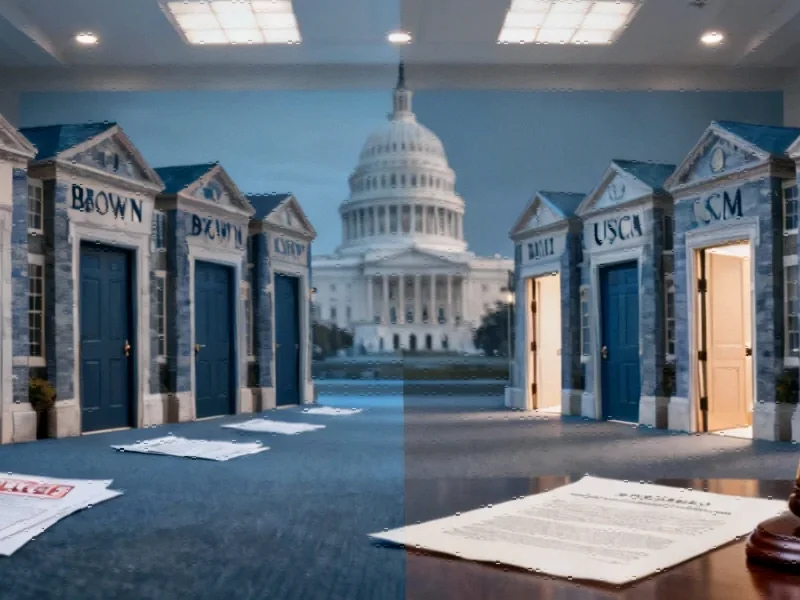Major Universities Reject Federal Proposal
Four of nine elite universities have reportedly rejected the Trump administration’s proposed “compact” for higher education reform as the October 20 deadline approaches, according to sources familiar with the matter. The University of Pennsylvania, Brown University, University of Southern California, and MIT have all announced they will not sign the agreement that would tie federal benefits to specific institutional changes.
The proposed compact, according to reports, would require universities to increase conservative representation on campus, eliminate departments perceived as hostile to conservative ideas, adopt biological definitions of sex and gender, freeze tuition for five years, restrict student protests, and maintain institutional neutrality on current events. In exchange, institutions would maintain access to federal research funding, student loans, contracts, and immigration visas, with potential for additional grants.
Higher Education Organizations Push Back
The American Council on Education, representing over 1,600 colleges and universities, has called for the compact’s complete withdrawal. In an official statement, the organization characterized the proposal as “unprecedented litmus tests” that would impose “government control of a university’s basic and necessary freedoms.”
Analysts suggest the situation presents significant irony, as the proposal originates from a Department of Education whose leadership has previously advocated for reduced federal involvement in education. The approach appears aligned with Vice President JD Vance’s publicly stated views on higher education reform. According to a Yale Daily News profile, Vance has previously encouraged conservatives to “attack the universities in this country.”
State Governments Threaten Additional Consequences
State leaders have joined the opposition, with California Governor Gavin Newsom announcing that any California university signing the compact would immediately lose billions in state funding, including Cal grants. In a statement, Newsom declared that “California will not bankroll schools that sell out their students, professors, researchers, and surrender academic freedom.”
Pennsylvania Governor Josh Shapiro expressed support for the University of Pennsylvania’s decision, noting on social media that he had “engaged closely with university leaders on this.” The University of Pennsylvania had previously outlined its position in an official update to its community.
Unusual Alliances Form in Opposition
The Foundation for Individual Rights and Expression (FIRE), which has frequently represented conservative interests on campus, has also opposed the compact. In their statement, the organization warned that “a government that can reward colleges and universities for speech it favors today can punish them for speech it dislikes tomorrow. That’s not reform. That’s government-funded orthodoxy.”
According to the Los Angeles Times coverage of USC’s decision, the university joined other institutions in defending academic freedom principles. Similarly, The Hill reported Brown University’s rejection of what it characterized as federal overreach.
Administration Continues Push Amid Growing Resistance
Despite the rejections, sources indicate the Trump administration remains determined to secure agreements from remaining institutions. The Associated Press reports the White House has convened calls with the five other targeted schools: University of Arizona, University of Virginia, University of Texas, Dartmouth, and Vanderbilt.
The debate reflects broader tensions in American conservatism regarding government intervention versus institutional autonomy. Meanwhile, the Department of Education under Secretary Linda McMahon continues to pursue its agenda despite previous administrative changes and staffing reductions.
As the deadline approaches, observers note the situation represents a significant test of institutional autonomy in higher education. The outcome could influence future policy developments and set precedents for federal involvement in university governance, with potential implications for industry developments in education and related sectors experiencing market trends toward increased regulation.
This article aggregates information from publicly available sources. All trademarks and copyrights belong to their respective owners.
Note: Featured image is for illustrative purposes only and does not represent any specific product, service, or entity mentioned in this article.



